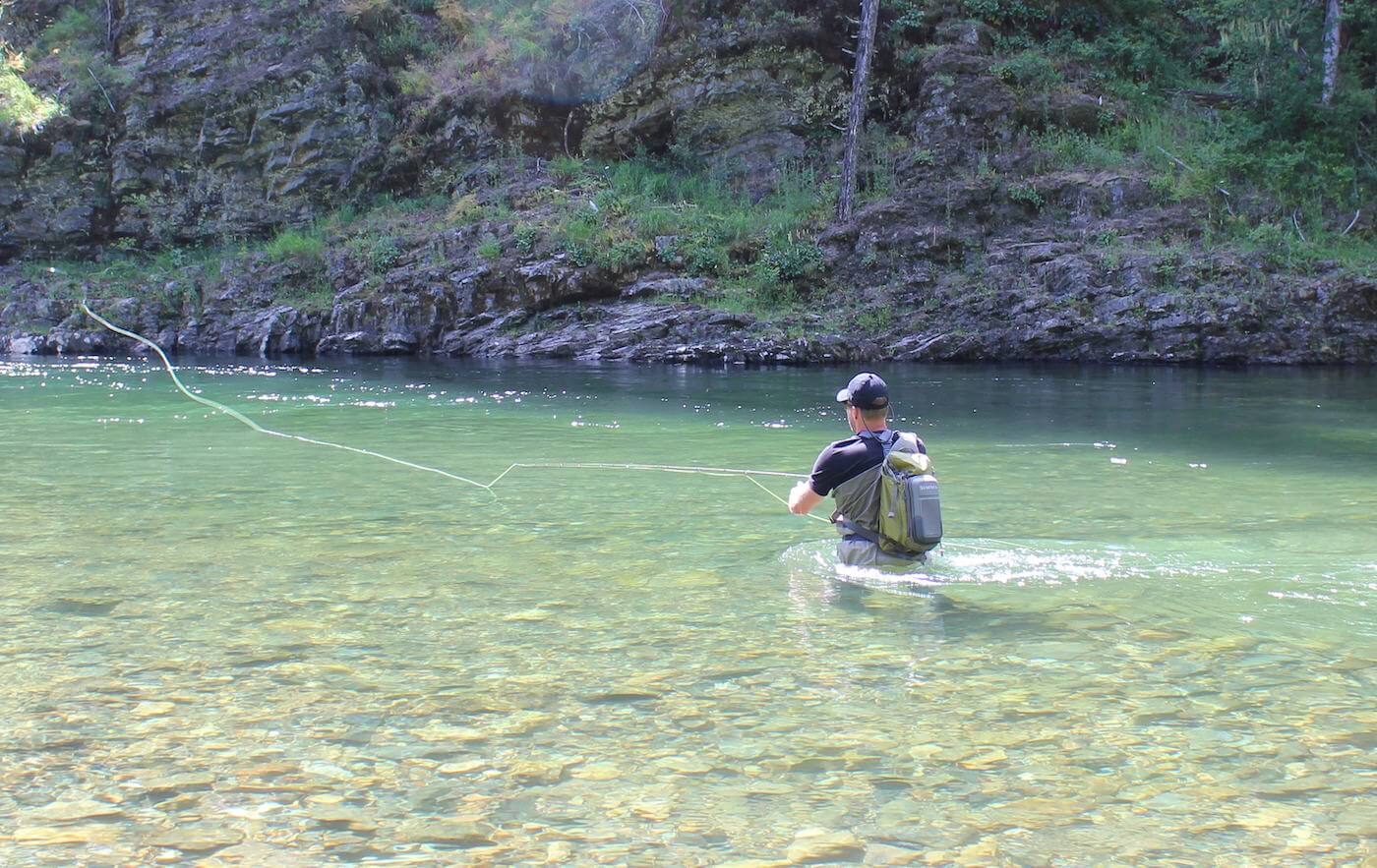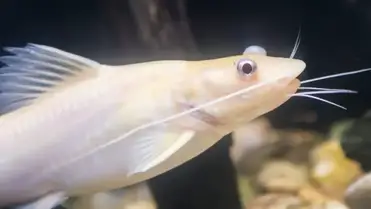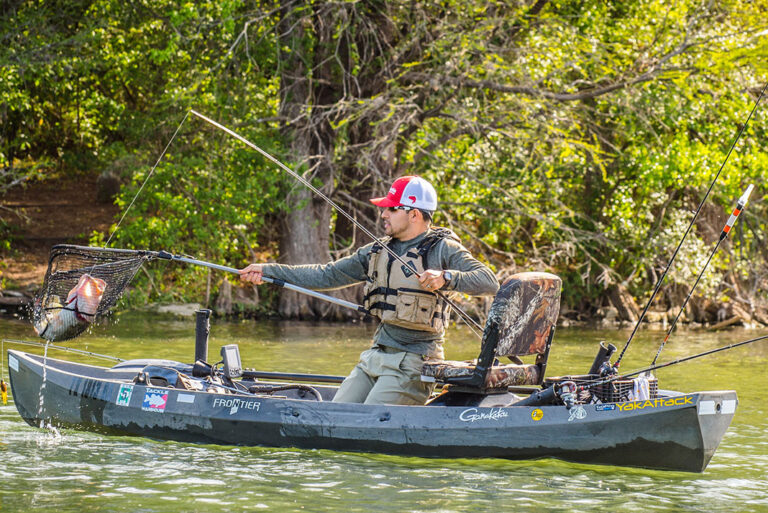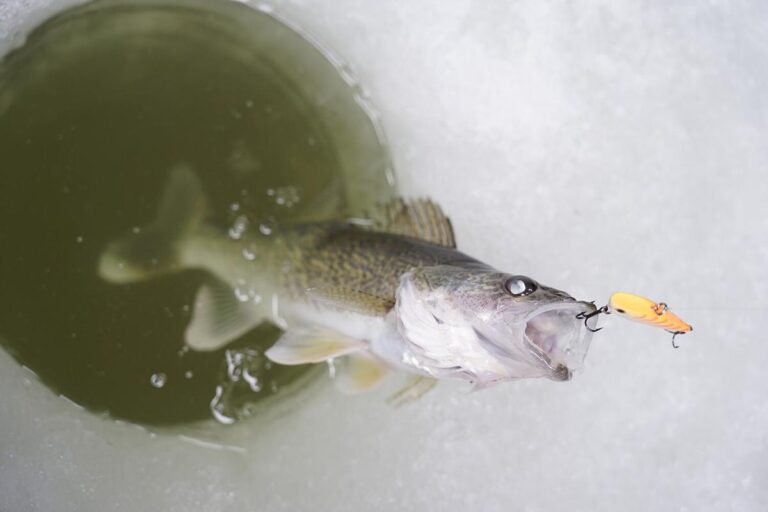To choose the right fishing gear for river fishing, consider the type of fish you want to catch and the water conditions, such as the depth and current. Fishing in rivers can be a challenge, but with the right gear, you can increase your chances of a successful catch.
The type of gear you need will depend on a variety of factors, such as the type of fish you want to catch, the location and the water conditions. For instance, if you want to catch trout in a fast-moving river, you’ll need a lightweight rod and reel that can handle the swift current.
On the other hand, if you’re fishing for catfish in a deeper part of the river, you’ll need a heavier rod and reel that can handle the weight of the fish. Additionally, make sure to bring the right bait, lures and other accessories to help you lure in your prey.

Credit: manmakesfire.com
Essential River Fishing Gear
Choosing the right fishing gear for river fishing – essential river fishing gear
If you’re planning a fishing trip to the river, you must have the appropriate gear with you. From the right kind of fishing rods to the right bait, every piece of equipment has significant importance in ensuring a successful catch.
We will cover the essential river fishing gear you’ll need to make the most out of your fishing experience.
High-Quality Fishing Rods
Fishing rods are one of the most important pieces of equipment for any angler. You should select your rod based on the type of fish you’re targeting and the type of fishing you’ll be doing. For river fishing, a light to medium action spinning rod with a length of 6 to 7 feet would work perfectly.
Some key things to look out for when selecting a fishing rod include:
- Appropriately rated line weight and lure weight
- Good sensitivity
- Comfortable handle grip
Reels And Lines To Catch Different Fish Species
Different fish species will require different types of reels and lines to catch them. For instance, if you’re targeting panfish or bluegills, a small spinning reel with a light, 4 to 6-pound monofilament line is ideal. On the other hand, if you’re targeting larger fish like trout, bass, or walleye, a medium-sized spinning reel with an 8 to 12-pound monofilament line or braided line is a better option.
Monofilament And Fluorocarbon Lines: Comparing Strengths And Use Cases
Monofilament and fluorocarbon lines are the two common types of fishing lines used by anglers. Monofilament lines, made of nylon material, have more stretch and are more forgiving on lighter rods, making them easier to use and preventing breakage. Fluorocarbon lines, on the other hand, have less stretch, are more sensitive, and are virtually invisible underwater, making them ideal for catching wary fish species.
Therefore, choose your line type depending on your target fish species and water conditions.
Hooks: Types And Sizes For Different Fish Species
Hooks come in different sizes, shapes, and styles, catering to different fish species and fishing techniques. When choosing hooks, consider the size and type of fish you’re targeting. A small panfish will require a smaller hook size, ranging from 6 to 10, while bigger fish species like bass may require larger hook sizes ranging from 2 to 5/0.
Be sure to also consider the hook shape, such as j-shaped, circle, or treble hooks, depending on your fishing needs.
Sinkers And Floats: Balancing Your Line To Maximize Your Catch
For successful river fishing, the right combination of weight and float is critical to achieve the perfect balance of your lure in the water. Sinker weights are available in different sizes and shapes, and the right size of lead will allow your bait to reach the bottom of the water.
Floats, on the other hand, come in various shapes, sizes, and materials. They help you track your bait and adjust it to the ideal depth for catching your target fish species.
Bait: Live And Artificial For The Most Effective Lure
Live bait and artificial lures are both a great option when fishing in the river. With the right bait selection, you can improve your chance of catching fish significantly. When selecting live bait, consider the natural prey of the fish you’re targeting.
For example, worms are a great option for catching any type of fish. Alternatively, consider using artificial lures like spinnerbaits or jigs, which can mimic the movement of natural prey.
Pliers, Scissors, And Cutters: Handy Tools For Completion Of The Basics
Fishing accessories like pliers, scissors, and cutters are essential for removing hooks, cutting fishing lines, and tackle assembly. Pliers are especially important for removing swallowed hooks, while scissors or cutters are useful for trimming lines. When selecting these tools, look out for quality materials, comfortable grip, durability, and easy-to-use design.
Successful river fishing requires the right gear. The above-discussed fishing gear is essential for any angler trying to catch fish in the river. Whether you’re a beginner or an experienced angler, selecting the right gear and putting it into practice is sure to lead to a great catch.
Advanced Fishing Accessories For Optimal River Fishing
Fishing on a river can be an adventure of a lifetime, full of unexpected surprises and breathtaking scenery. To make the most out of your river fishing experience, you need to be well-equipped with the right fishing gear and accessories.
In this section, we will look at some of the advanced fishing accessories required for optimal river fishing.
Waders And Boots: Staying Comfortable, Warm, And Dry While Fishing
Fishing on a river can be challenging, especially if you are wading through the water. Waders and boots are essential in keeping you comfortable, warm, and dry while fishing. Here are some key points to note:
- Waders are waterproof clothing that cover your legs and torso, providing protection from water and mud. You can choose between chest waders or waist-high waders, depending on your preference.
- Fishing boots are designed to provide traction and support while wading through the river. They are also waterproof to keep your feet dry and comfortable.
- When selecting waders and boots, choose products that are made of high-quality materials and that fit snugly to ensure maximum comfort while fishing.
Fishing Hat And Sunglasses: Protecting From The Sun And Maintaining Visibility
When spending long hours on the river, it is crucial to protect your eyes and head from the sun’s glare. Sunglasses and fishing hats are essential gear to maintain visibility and protect from the sun’s harmful rays. Here are some key points to note:
- Polarized sunglasses reduce glare and provide clear vision, enabling you to spot fish easier and ensure safety while on the water.
- A fishing hat with a wide brim is an excellent way to protect your face and neck from the sun’s intense rays. A good hat should be lightweight, comfortable, and moisture-wicking.
Fishing Nets And Mesh Bags: Supporting Effective Catch And Release
When you catch a fish on the river, it is essential to handle it carefully and return it to the water safely. Fishing nets and mesh bags are essential accessories for effective catch and release. Here are some key points to note:
- Fishing nets are available in various sizes and materials, depending on the type of fish you are catching. They are useful in securing the fish while removing hooks and facilitating a safe release.
- Mesh bags are ideal for holding fish while ensuring they are in the water and can breathe effectively. This gives you enough time to prepare for their release without causing harm to the fish.
Jig Heads And Crankbaits: Maximizing Your Chance Of Attracting Fish
Using the right lures can be the difference between catching fish and returning home empty-handed. Jig heads and crankbaits are effective lures for river fishing. Here are some key points to note:
- A jig head is a weighted hook with a skirted body that vibrates as it moves through the water, attracting fish to the bait.
- Crankbaits are designed to resemble fish, and their movement through the water can attract predator fish, making them an effective river fishing accessory.
Fish Finders And Gps: Navigating The River And Finding The Best Fishing Spots
Fish finders and gps systems make navigating the river and finding the best fishing spots easier. Here are some key points to note:
- Fish finders use sound waves to detect fish in the water, providing valuable information about depth, structure, and temperature. With this information, you can find the best fishing spots and increase your chances of catching fish.
- Gps systems are useful in navigating the river and locating spots where fish are likely to be found. It provides the ability to plot and follow routes, marking waypoints, and measuring distances to ensure you find your way back home safely.
Tackles Boxes And Organizers: Storing And Managing Your Fishing Gear
Storing and managing your fishing gear is crucial to ensure you can locate your fishing gear quickly and easily. Tackle boxes and organizers are essential for keeping your fishing gear organized. Here are some key points to note:
- A tackle box is a container that stores all your fishing gear, including lures, hooks, and lines. It is essential to select a sturdy and waterproof tackle box to keep your gear safe and secure.
- Fishing organizers can help to keep your hooks organized and minimize tangles. They are available in different sizes and materials and can be attached to belts or bags for easy access.
Choosing the right accessories and gear is crucial for a successful river fishing trip. With the right accessories such as waders and boots, sunglasses, fishing nets, jig heads, fish finders, and tackle boxes, you can comfortably navigate and fish on the river and increase your chances of catching fish.
Conclusion
By now, you should have a better understanding of what fishing gear you need for river fishing. Remember, the right gear can make all the difference in your fishing experience. Take time to research and invest in quality equipment that suits your needs and preferences.
Don’t forget to consider factors such as the type of fish you are targeting, the size of the river, and the weather conditions. Furthermore, always prioritize safety and ethical fishing practices. With the right gear and attitude, you can enjoy a fulfilling and rewarding day of fishing on the river.
So go ahead, pack your gear and head out to the river, knowing that you have made an informed decision on choosing the right equipment. Happy fishing!






